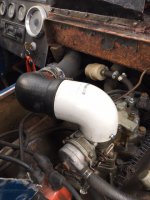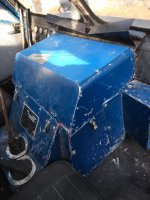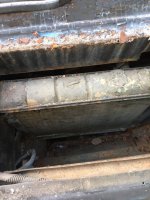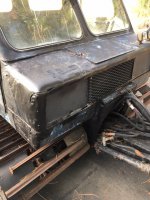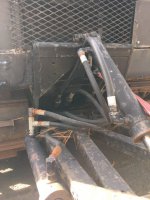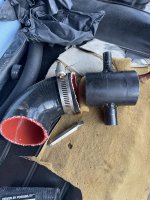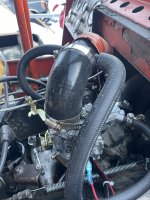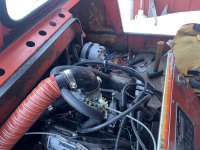Studied the diagrams for my 1404 Imp in the manual and it appears that the front portion of the cab is removable as a unit along with the windshield. I have a pivot/hinge on the right side but not the left, and no such thing shows in the diagrams. Only God knows what the previous owner did to it.
So...if a person wanted access to the front of the engine for such mundane things as checking ignition timing or changing belts, how in the world is that done?
So...if a person wanted access to the front of the engine for such mundane things as checking ignition timing or changing belts, how in the world is that done?

